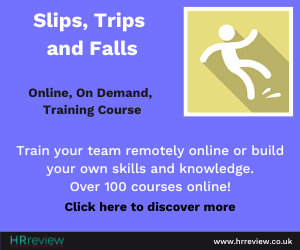There’s no doubt that meditation is good for us. Countless studies and millennia of anecdotal evidence from a number of cultures tells us that. But when it comes to meditating at work, it’s hardly as easy as just sitting in lotus pose and letting our thoughts go by like cars.
It’s really hard to go from intense work and stress to finding a sense of calm. Believe me, I know: I, like a lot of people in this hectic modern age, have always thought that meditation was not for me. I’m too busy, my brain is too chaotic, I simply do not have the time to sit around thinking of nothing. I’ve never once succeeded in clearing my thoughts while meditating, ever. As it turns out, that’s ok. There are other types of meditation that can help people like us.
So it seems to me that, instead of shoving square pegs into round holes, life is sometimes about taking what you can from a situation and making the most of it. So, if you’re someone who has always thought meditation isn’t for them; if you’ve always wanted to try but feel that you don’t have time; if you lead a busy team who are always stressed and you want to find some strategies to share, then this one’s for you.
In this article I’m going to share three practical active meditation techniques that have really helped me to harness this ancient practice in its different forms, in ways that can slot into the endlessly busy lives of modern workers.
A brief pit stop on the benefits of meditation
Before we get into the tips, we need to dip our toes into the benefits of meditation.
In 2018, Yale psychology professor Laurie Santos created a class called ‘Psychology and the Good Life’. It immediately became the most popular class in the university’s history, spawning a free 6-week online course called the ‘Science of Wellbeing’ which has been taken by more than 4.4 million people to date (including yours truly during lockdown when it felt extremely pertinent). The course highlights many research-backed ways to be happier, but one of the key tools is, of course, meditation.
‘A regular meditation practice can help you realise that your thoughts are just…well, thoughts,’ Professor Santos, writes. ‘The practice of sitting with unhelpful emotions like fear, anger or jealousy — even for a few minutes—can help us start to put them in some perspective.’
The list of potential benefits from meditation is lengthy, including: reducing stress and anxiety; improving sleep; promoting creativity and problem solving; increasing focus, memory and ability to learn; decreasing awareness of pain; improving immune function, and lowering blood pressure and heart rate.
Before we get into it, please note that as with anything, meditation has a few possible side effects. Some people can find the sensation of getting in their heads dissociative. Others can find sitting with their thoughts difficult, especially if those thoughts are negative or distorted. If you feel anything like this, please reach out to your doctor or a therapist for some help.
-
Breathwork: active meditation whenever you need it
The year is 2011. I’m sitting on a little bench outside the office of Dr. Ian Patterson waiting for my admissions interview for Queens’ College, Cambridge. Quite frankly, I’m nervous as all hell, but as I’m sitting there, I’m focused on my breathing. In, two, three; Hold, two, three; Out, two, three.
I learned about this breathing technique – a form of active meditation – in the classes kindly put on by my school to help us prepare for Oxbridge interviews (and as Croydon state school kids, we definitely needed to be prepped for what was to come!).
‘Your heart can’t physically race if your breathing is slow,’ the instructor told us. Now I don’t know about the science of that, but it made sense to me then and still does today. This technique has helped me countless times in the 12 years since: from stressful meetings, to public speaking, to airport delays, you can find me regulating my breathing.
I didn’t know back then that this was a form of ‘breathwork’ – in fact, I don’t think I even heard the term until well into this pandemic era, and I didn’t realise it was a form of active meditation until much later. Together, Wikipedia and Merriam-Webster sum it up very nicely: breathwork is ‘conscious, controlled breathing done especially for relaxation, meditation, or therapeutic purposes’ that ‘attempts to give rise to altered states of consciousness, and to have an effect on physical and mental well-being’.
The amazing thing about breathwork is that it’s so accessible – inflation is very real but, for now, breathing remains completely free. You can do it wherever you are, and there are loads of breathwork techniques that you can do without anyone even noticing what you’re doing. If you’re looking for somewhere to start, here’s a five minute breathwork session, guided by interlude creator Calais Peterkin, founder of The Breath Room.
-
Diaphragmatic breathing: more than just in and out
At the bottom of the burnout barrel in October 2022, I was lucky enough to have cognitive behavioural therapy paid for me through work. While we’re on that point, if any key decision makers are reading this: invest in therapy for your teams. Not everyone will need it, but those who do will thank you enormously, and it’s better for everyone in the long run.
My therapist, Christine, taught me the next two techniques that helped me enormously. The first one is diaphragmatic breathing.
I clicked with diaphragmatic breathing almost immediately, which makes sense given that it’s a form of breathwork – basically a more sophisticated version of the ‘3 in, 3 hold, 3 out’ (or 3-3-3) breathing I had already been doing for so long.
So often, Christine explained to me, we’re breathing barely below our throats, or high up in our chests, always an inch away from hyperventilating. That tells our sympathetic nervous system (SNS) – the one that’s wired to help us run from tigers and lions and bears – that danger is afoot.
By contrast, diaphragmatic breathing tells our SNS that those lions and tigers and bears we’re afraid of? They’re not actually there. Everything’s ok, but thanks for the warning. At the same time, it triggers the parasympathetic nervous system, the one that’s responsible for resting and digestion.
So, how do you do diaphragmatic breathing? It’s really, really simple. Here’s a step-by-step from the University of Michigan Health:
- Find yourself in a comfortable seated or lying position
- Place one hand on your abdomen and one on your chest. When you’re doing the exercise, only the hand on your abdomen should move (if you’re in the office and you can’t do this step, that’s fine, the breathing will still be really beneficial)
- Inhale deeply into your belly through your nose for four counts
- Hold your breath for two counts
- Exhale slowly through your mouth for six counts (you can increase this to eight once you’re used to the practice)
This formation of breathing in, holding and breathing out is often called ‘box breathing’ as it’s helpful to visualise a line being drawn into the shape of a box as you breathe, holding your breath at each corner. Another benefit of this is that it can be much easier to start to empty your mind when you’re focusing on something else. As the yoga practitioner Cole Chance once said, ‘the best thing for a busy mind is to give it something to do’.
Note: it’s normal to feel a bit lightheaded or dizzy when doing this for the first time. It’s best to try this out at home to get used to it.
-
Progressive muscle relaxation (PMR): swinging the pendulum
The second technique I learned during cognitive behavioural therapy is progressive muscle relaxation (PMR), a non-pharmaceutical method of deep muscle relaxation. PMR involves systematically squeezing a specific muscle group intensely then releasing. Christine the Therapist likened it to a pendulum: sometimes you have to put yourself under physical tension to help the pendulum swing further back to really feel the benefits when it swings towards relaxation.
PMR is best when guided, and there are loads of sessions free on YouTube. I’ve found it’s really important to find a voice that you like to listen to, as with all forms of meditation. I like this quick five-minute one – if you’re doing this in the office you may want to stop once you get to the upper body as it’s a little more conspicuous.
Speaking of which, while you probably don’t have anywhere in your office that you can lie down to do a full PMR routine, a micro version of PMR can be a really quick way to help release a bit of workplace tension: starting at your toes, squeezing and releasing each muscle group up as far as your glutes. I’ve just done it whilst sitting here writing this and you definitely wouldn’t be able to tell.
The reason I love PMR isn’t just for how I feel after, but because focusing on each muscle group means I naturally drop out of whatever’s worrying me for a few minutes. It’s meditative without the pressure of ‘letting go’.
A word of caution: a full progressive muscle relaxation session can be very relaxing, to the point where I’ve had to set alarms for myself to make sure I wake up if I fall asleep. That’s great if you’re using it at bedtime, but not so great at work. What I’m suggesting here is using a very small version of PMR when you need a moment of focus and/or stress relief.
Active meditation: Any time, anywhere
Back in 2011 Cambridge, I’m doing pretty well keeping it together until the girl before me skips out of her interview: ‘Good luck!’ she says brightly, beaming at me. I beam back, internally cursing her and her obviously excellent interview. (Spoiler: we both got in and became firm friends within the first 10 minutes of meeting each other.) I forget my 3-3-3 and my heart rate spikes just as I’m walking in. Marvellous!
But in the room, I go back to 3-3-3, actively feeling my pumping heart calm to a gentle pulse. I don’t think that the two eminent Cambridge professors sitting before me had the slightest inkling of the active meditative practice going on in front of them.
The reason I’ve pulled out these specific examples of active meditation is because most workers – whether in the office, or in a bustling coworking space, or even in a busy home – don’t have a private space that they can retreat to for 10 minutes of quiet meditation. Further, many of us don’t have the luxury of a manager who understands the importance of taking breaks, let alone taking a break to meditate.
Many people also report struggling with the ‘try to empty your head’ part of meditation, so I’ve found that focusing on my breath or on the tensing/releasing of my muscles gives my brain something to think about other than my own worries and concerns.
I’d love for all of us to get to a point where we’re starting and ending our days with some form of mindfulness, but in the meantime, breathwork and PMR are really accessible and active techniques. Think of it as using them in micro form, to give you a little bit of what you need, wherever you are, whenever you feel like you need them.











